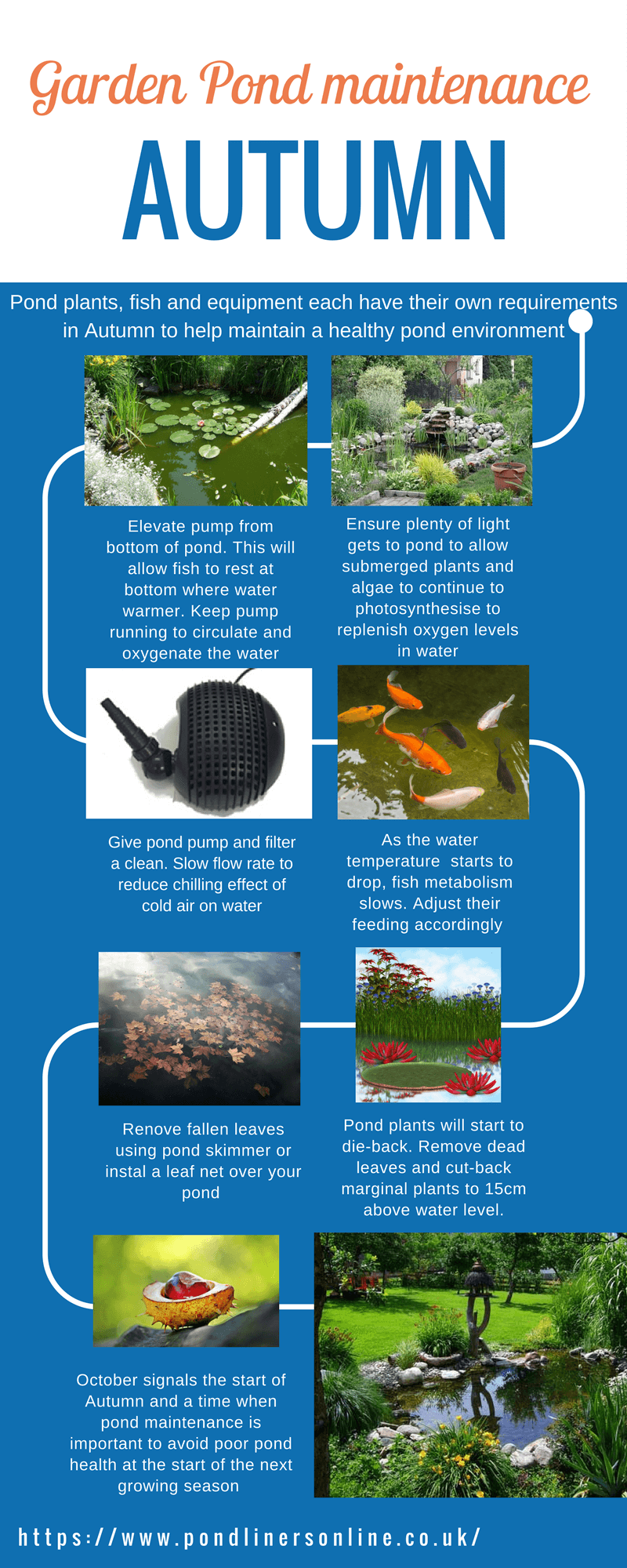The transition from summer into autumn is marked by the colour changing of leaves, cooling temperature and the nights getting longer. For the pond owner it is the fall of the leaves that alerts them to the onset of autumn. The lovely hues of red, orange and brown colours bring an exciting dimension to footpaths, streets and parks. But to ponds there is these fallen leaves risk floating to the bottom of ponds and resulting in dangerous increase in debris levels if not dealt with.
A question that frequently gets asked by pond owners at this time of the year is whether a pond heater is necessary to invest in. If you don’t keep fish in your garden pond then a heater is not needed at all. If you have followed the Autumn Pond Maintenance guidelines as illustrated in the above infographic, then you are not likely to need a heater either and I will explain why.
A pond that ices over for a few days is not likely cause stress to your fish or affect the health of your pond. During the cold winter months fish are less active, their metabolism has slowed and they are eating very little if anything at all. They will also spend the winter at the bottom of the pond where the water is a little warmer. With the slowed metabolism fish excrete less waste into the water. A thorough Autumn pond maintenance regime of cutting back, pruning dead foliage and skimming-off leaves means less organic matter sinks to the bottom of the pond to turn to sludge releasing carbon dioxide into the water as it continues to decay. So, with no sludge and clean healthy water an iced over pond isn’t going to lock in any toxins.
If you live in the northern most parts and you do experience periods of snow and freezing temperatures for extended periods then an aerator or pond heater maybe an option – although leaving a plastic ball floating on the surface of your pond will help prevent it freezing over thereby allowing gases to escape and oxygen to enter the water.






